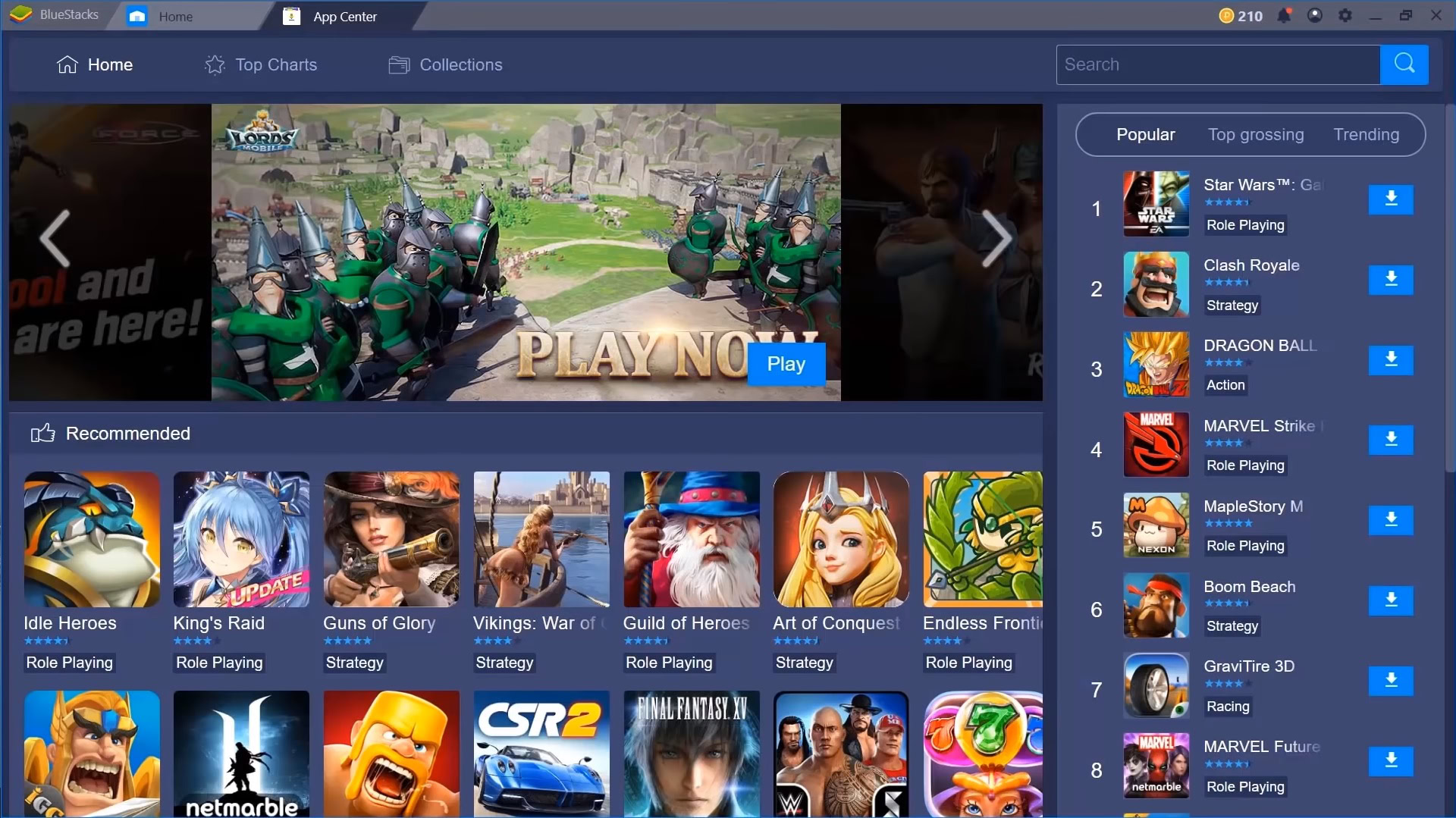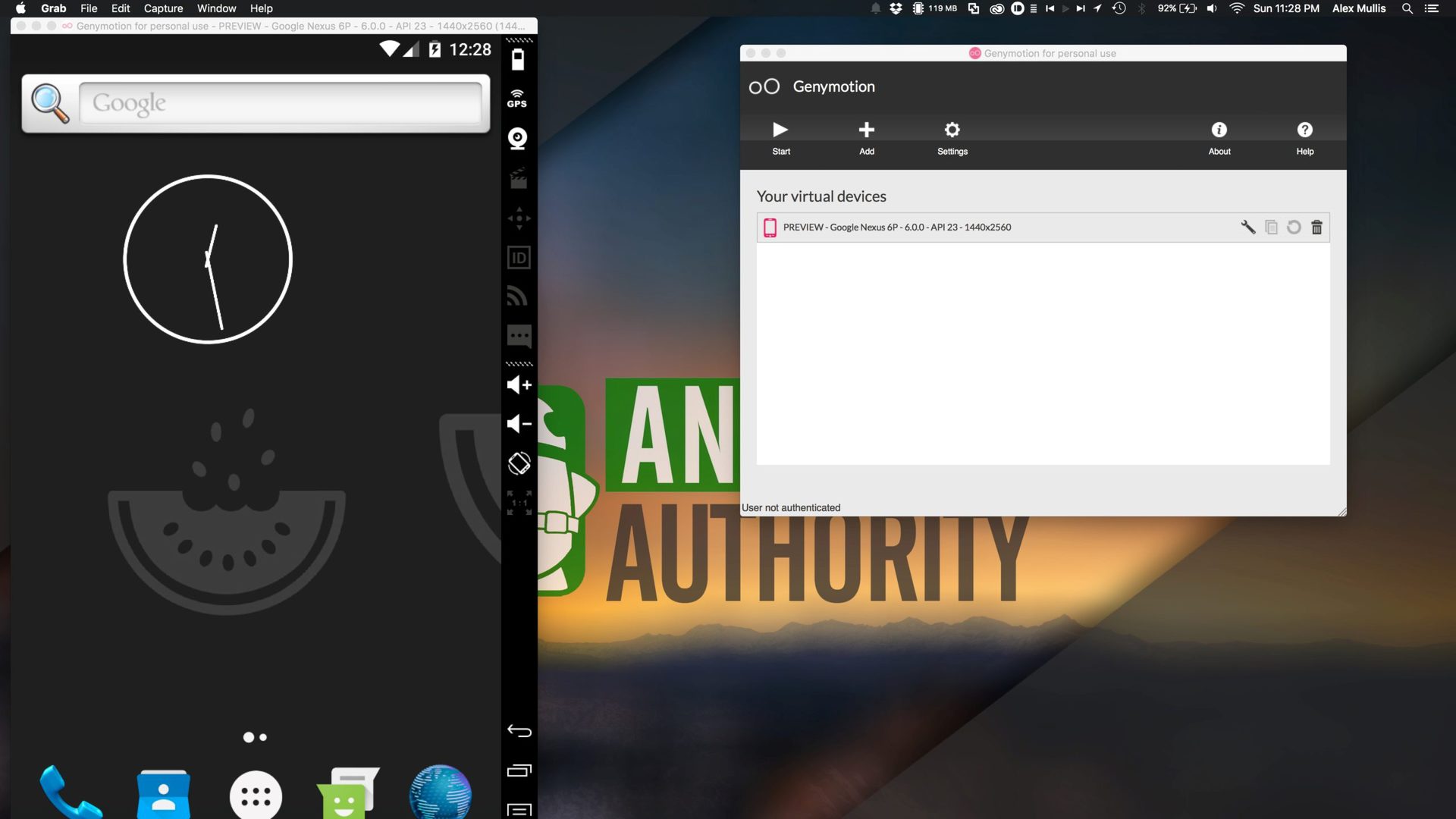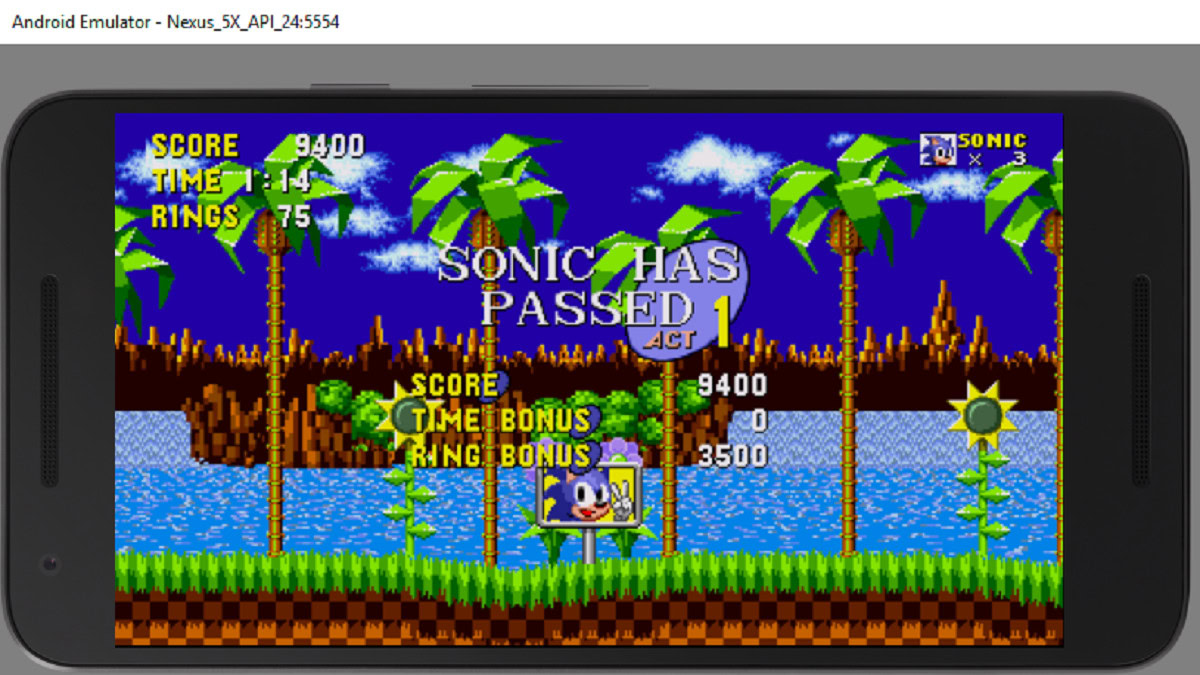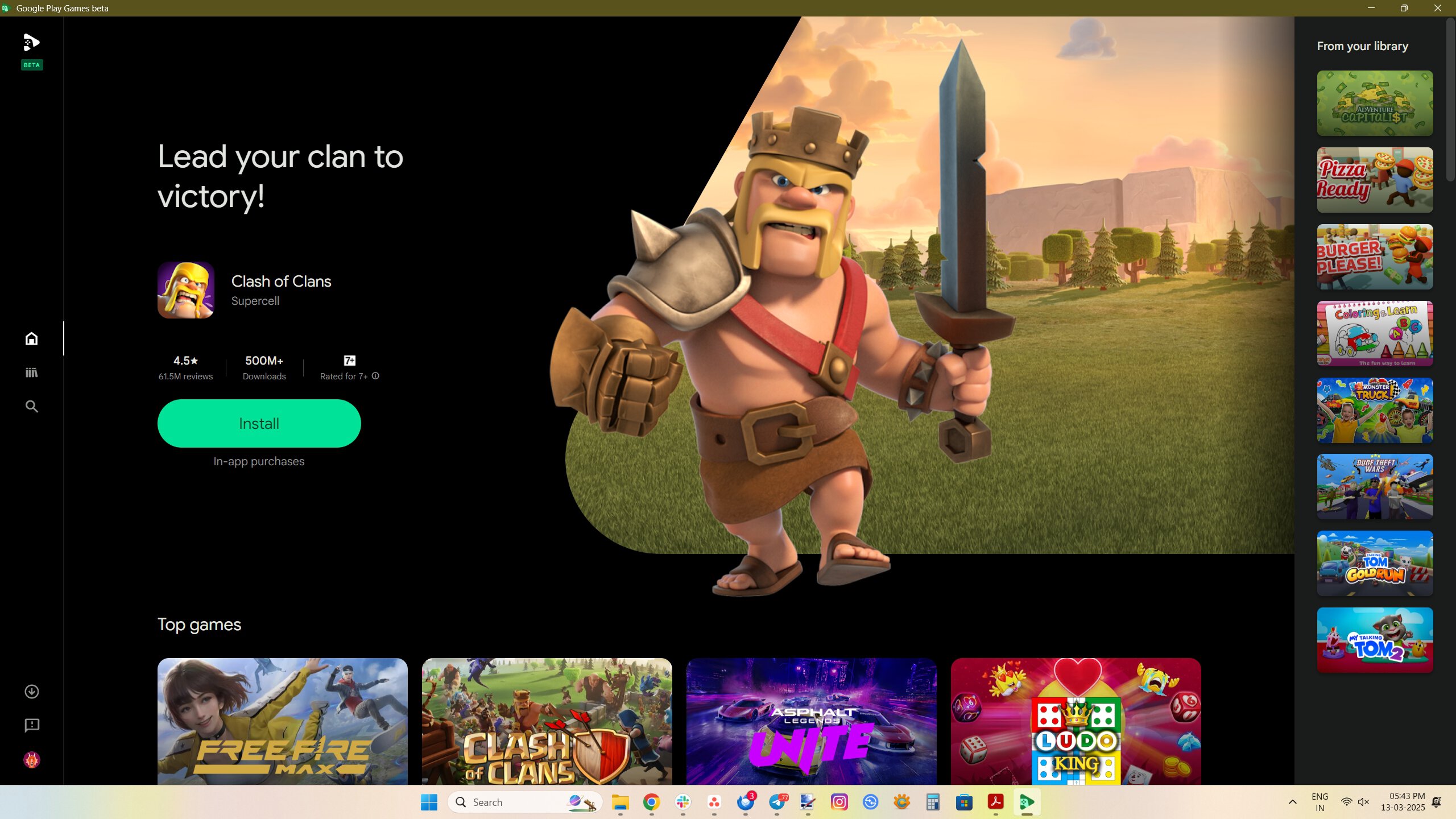Affiliate links on Android Authority may earn us a commission. Learn more.
How to install Android on PC: These are your best options
Published onMarch 23, 2025
Android is the most popular mobile operating system in the world, but you can also install it on your PC or macOS computer. There are many ways to get the Android OS running on a PC, including emulators, bootable USB versions, and even full standalone applications like BlueStacks. Each has its advantages and disadvantages depending on your needs.
If you’re looking to install Android on your laptop or desktop, we have your back! Here’s a full breakdown of the best options available.
The easiest way to install Android on your PC is to use an emulator like BlueStacks that will run on top of your Windows, Linux, or Mac operating system. Alternatively, you can dual-boot Android alongside your existing Windows install. Keep reading to learn more.
JUMP TO KEY SECTIONS
The most seamless Android emulator: BlueStacks

If you’re looking to install a full Android experience on your Windows PC, complete with a home screen and launcher, you’ll need an emulator. BlueStacks is one of the longest-enduring methods to install Android on PC, founded in 2011 and still going strong.
BlueStacks has impressive performance considering it’s running on top of your existing operating system, especially since it’s got more than just an Android Virtual Device. Additional features include a simplified UI, optimizations dedicated to gaming, keyboard and mouse-mapping support, multi-instance support to run multiple apps, and even support for multiple Google Accounts at once.
BlueStacks is one of the most popular and easiest-to-use Android emulators for PC.
The user interface on Windows offers quick app switching in a tab format on the top of the window. However, those hoping to install their own launchers will be disappointed. The option was removed with the release of BlueStacks 4. On the plus side, BlueStacks also integrates with Windows to transfer files like APKs and there is even universal copy and paste.
BlueStacks remains a virtual machine at its core. So you don’t quite get native system performance, but this keeps the application simple to install and run. The latest version, Bluestacks 5 has many performance enhancements to run on both high-end and low-end PCs. The only downside is that you’ll have to tolerate sponsored app suggestions. Even so, we believe that BlueStacks remains one of the best methods of running Android on PC and macOS computers out there.
Android on PC for the gamers: MEmu

If you’re after a simple way to run Android games on a Windows PC, MEmu might be the way to go. The Chinese software is ad-supported, which might be a put-off compared to alternatives. Still, MEmu’s gaming-focused features might be worth it for some.
MEmu supports multiple instances, allowing you to run several apps at once to level up multiple accounts. There’s also support for keyboard and mouse input as well as gamepads so you can play your way. Other functionalities include the ability to sideload apps and window resizing with a minimum sizing that prevents apps from becoming unusable.
In terms of performance, MEmu initially gained popularity as a faster emulator compared to BlueStacks 3. However, the race is much closer these days given BlueStack 5’s performance improvements. The latest MEmu version supports up to Android 12, with compatibility for older versions included too.
There are a number of other game-focused clients that let you install Android on PC, including Gameloop (formerly Tencent Gaming Buddy), NoX, and others. Check out our list of the best Android emulators for more niche options.
Pure Android emulation with Genymotion

Genymotion is a legacy Android on PC project, offering pure Android emulation with thousands of configuration options available to tailor your experience. The software runs an Android Virtual Device from within VirtualBox, which you’ll also need to install.
One of Genymotion’s biggest draws is the simulation of GPS, camera, SMS & calls, multi-touch, and basically all the other familiar Android hardware features. Other features include ADB access, support for a variety of app testing frameworks, and even cloud access through services like Amazon and Alibaba.
Remember though, Genymotion is primarily targeted at developers looking for an environment in which to test their applications. As such, it’s a professional piece of software with a selection of price plans to match. However, you can download and use the Personal Edition for free.
Dual-boot Android x86.org Android on PC
Next on our list is a free and open-source option: the Android-x86 project.
Based on the Android Open Source Project, Android-x86.org set out to make Android available to anyone with a PC. This makes Android x86 one of the best options if you’re looking to install the latest version of Android on PC and use it as your primary operating system or run it in a VM. The software offers near complete stock Android with no additions whatsoever, which is a mixed bag. The good news is that Google Mobile Services (GMS) is installed by default. The bad news is that using something made for touch on a desktop is not that intuitive.
Unfortunately, installation is also a little more involved than some of the applications listed below. The standard method is to burn an Android-x86 version to a bootable CD or USB stick and install the Android OS directly to your hard drive. Alternatively, you can install Android-x86 to a Virtual Machine, such as VirtualBox. This gives you access from within your regular operating system.
From inside your Virtual Machine, you can install the ISO file and then boot into the operating system. Find an official guide to the installation options for Android-x86 here.
Create a virtual device using Android Studio

For the most part, Android development requires a tool called Android Studio. This is the software developers use to enter their code, test their apps, and manage their projects. It also happens to include a powerful “Android virtual device manager” (AVD Manager) for setting up and installing emulators that can run full-fat Android extremely well.
Using this Android virtual device has many advantages. If you select x86_64 as the architecture, there is the option to run the Android virtual device using hardware acceleration to speed up the performance. In many cases, this will offer a seamless experience; especially on more powerful hardware.
Another big advantage of the AVD is that it comes with the latest version of Android. In fact, this is how most developers will first try out new updates to Android, to see how they affect their apps. That means you can even try beta versions of Android before they’re released! Another way that the virtual device has evolved since the early days is by including the Google Play Store on some devices. This means you can access all the apps you’ve already purchased!
The AVD does require a little more set-up than some options on this list. You’ll need to download Android Studio first (alongside the SDK) and then you’ll need to create your new virtual device. This process does give you the option to choose the display size, memory, and even Android version. Unfortunately, the combination of Android Studio, the Android SDK (which houses the Android Virtual Device), and the Android platform all take up a lot of hard drive space.
This method will work on OS X, Windows, and Linux without issue. Android Studio, including the AVD Manager, can be found here.
The best options to install Android on a PC compared

Each method has its advantages and disadvantages, but it really depends on what you want out of having Android on your desktop.
For a few years, Microsoft offered a way to officially run Android apps on Windows through a installable subsystem. However, that was later discontinued in March 2024, likely due to low adoption.
So in the absence of an official solution from Microsoft, Bluestacks and other emulators are your best bet to install Android on a Windows PC. Genymotion is another choice that uses VirtualBox’s virtualization. And while Android-x86 works great as a proof of concept, it just isn’t that practical to use when comparing it to the other options discussed in this article. Emulators also offer a litany of gaming-related features that we often don’t even see in smartphone operating systems.
We also find installing the AVD Manager to be another decent solution. While it only comes packaged with Android Studio, the performance and flexibility are unmatched. Plus it is genuinely free, officially supported by Google, and constantly up-to-date.
The Play Games app on PC is another Google-endorsed method of running Android apps on a Windows PC. However, you cannot install all Android apps through this method so it’s the least flexible approach.
FAQs
No, Windows 11 no longer offers a way to install Android apps on your PC without an emulator.
There are a few ways to install Android on a PC ranging from downloading a third-party emulator to dual-booting an Android-based OS. We’ve outlined each method in the above article.
Yes, an older PC can run Android using an emulator or virtual machine.
In most cases, you cannot change from Windows to Android. However, you can emulate Android on top of an existing Windows OS.